Study on Power Frequency Breakdown Characteristics of Nano-TiO2 Modified Transformer Oil under Severe Cold Conditions
Abstract
:1. Introduction
2. Experiment
2.1. Sample Preparation
2.1.1. Preparation of the TiO2 Nanomodified Transformer Oil Sample
2.1.2. Preparation of Oil Samples with Different Moisture Contents and Temperatures
2.2. Experimental Platform Building
2.3. Test Method and Procedure
- Select the type of electrode and adjust the electrode spacing to the standard distance of 2.5 mm.
- Pour the test oil sample quickly into the oil cup, adjust the position of the magnetic stirring rod on the inner wall of the oil cup, and close the top cover of the oil cup and the electrostatic shielding cover.
- Select the test standard and set the frequency to 61.8 Hz for alternating current. Gradually increase the voltage with a step size of 2 kV/s until breakdown occurs in the oil gap.
- Allow the sample to stand for 2 min. During this resting time, stir the oil sample using the magnetic stirring rod. Repeat the breakdown test 12 times and take the average value.
3. Experimental Results and Analysis
3.1. Effect of Temperature on the Breakdown Voltage of Nanomodified Transformer Oil
3.2. Effect of Water Content on the Breakdown Characteristics of Oil in the Nanotransformer
3.3. Effect of Electric Field Type on the Breakdown Voltage of Transformer Oil
3.4. Effect of Nanomaterials on the Dispersion of Breakdown Voltage in Transformer Oils
4. Simulation
4.1. Two-Dimensional Model of the Electrostatic Field
4.2. Physical Field Control Equations
4.2.1. Electrostatic Field Control Equations
4.2.2. Particle Tracking Control Equations for Fluid Flow
5. Simulation Results and Analysis
5.1. Simulation Results of a Pair of Spherical Cap Electrodes
5.2. Simulation Results of the Sphere-to-Plate Electrode
5.3. Simulation of the Effect of Nanoparticles on Charged Particles
6. Conclusions
- Low concentrations of nanoparticles can improve the quality of transformer oil, but the enhancement of breakdown voltage is not significant. On the other hand, high concentrations of nanoparticles not only fail to improve the quality of transformer oil but also reduce the breakdown voltage. Analysis of the experimental results revealed that the current stage’s appropriate choice was a concentration of 0.01 g/L of TiO2 nanoparticles, which could significantly improve the breakdown voltage of transformer oil without significantly compromising its quality.
- The relationship curve between the breakdown voltage absolute value of TiO2 nanomodified transformer oil and temperature exhibited a “V” or “U” shape. Within the range of −30 °C to 30 °C, the breakdown voltage of the nanofluid was higher than that of pure oil, but the amplitude of improvement compared to pure oil was the smallest around −10 °C to 0 °C. Within the range of 0 °C to 30 °C, the breakdown voltage of the nanofluid increased with temperature, and the amplitude of improvement compared to pure oil also increased. Within the range of −30 °C to 0 °C, the breakdown voltage of the nanofluid increased with decreasing temperature, and the amplitude of improvement compared to pure oil also increased. Within the temperature range of −30 °C to −10 °C, the breakdown voltage could be increased by 13% to 15%; within the range of −10 °C to 0 °C, it could be increased by 8% to 9%; within the range of 0 °C to 30 °C, it could be increased by 18% to 21%.
- The moisture content had a significant impact on the breakdown voltage of TiO2-nanomodified transformer oil: the higher the moisture content, the lower the breakdown voltage. Regardless of whether the moisture content was high or low, the breakdown voltage of nanofluids was higher than that of pure oil, and the lowest breakdown voltage occurred at 0 °C. Compared to oil samples with low moisture content, when the moisture content is high, within the experimental temperature range, nanofluids exhibited a smaller amplitude of breakdown voltage enhancement compared to pure oil; however, the percentage enhancement was greater.
- Regardless of whether TiO2 nanomodified transformer oil or pure oil was used, the breakdown voltage under non-uniform electric fields was lower than that under slightly non-uniform electric fields. However, the breakdown voltage of pure oil exhibited instability under non-uniform electric fields, and the dispersion of breakdown voltage could be significantly reduced by adding TiO2 nanoparticles.
- The simulation results indicated that the addition of nanoparticles led to a certain adsorption effect on charged particles and facilitates their low-rate movement while carrying them. This validates the mechanism of nanomaterials enhancing the breakdown voltage of transformer oil, which is attributed to the hindrance of nanoparticle particles on the directed motion of charged particles in the oil. However, it should be noted that the model in this paper was established on the basis of numerous approximations and assumptions, and further research is needed to validate the specific mechanism.
Author Contributions
Funding
Institutional Review Board Statement
Informed Consent Statement
Data Availability Statement
Conflicts of Interest
References
- Peng, W.L. Research on Excitation Surge Characteristics and Identification Methods of HVDC Converter Transformers. Master’s Thesis, Tianjin University, Tianjin, China, 2019. [Google Scholar]
- Jin, E.S.; Wu, W.N.; Zhang, B.H.; Zhu, H.; Geng, M.W. A New Protection Method for HVC Converter Transformers Sutiable for No-Load Closing and Inter-Turn Faults. Electr. Meas. Instrum. 2023; accepted. [Google Scholar]
- Li, T.B.; Tong, T.; Xi, R.; Xu, B.C.; Tong, J.X.; Li, Y. Study on Vibration Characteristics of Power Transformers under Direct Current Bias. Transformer 2023, 60, 52–58. [Google Scholar]
- Zhang, Z.Y. Study on the Dynamic Evolution Characteristics of Partial Discharge and Suspended Bubbles in Transformer Insulating Oil. Master’s Thesis, Shandong University, Jinan, China, 2022. [Google Scholar]
- Zhang, Y.; Tang, J.; Pan, C.; Luo, X.; Yao, Y. Impact of Velocity on Breakdown Characteristics of Transformer Oil Containing Bubbles. Trans. China Electrotech. Soc. 2022, 37, 479–487. [Google Scholar]
- Li, Q. Study on Breakdown and Dielectric Properties of Nanocomposite Insulating Oil for Power Transformers. Aging Appl. Synth. Mater. 2020, 49, 40–43. [Google Scholar]
- Han, J.W. Study on Refining and Modification of Vegetable Insulating Oil and Its Dielectric Response. Master’s Thesis, Three Gorges University, Yichang, China, 2021. [Google Scholar]
- Qin, C.Q. Research and Application Progress of Vegetable Transformer Oil. J. Hubei Eng. Inst. 2018, 38, 5–9. [Google Scholar]
- Rafiq, M.; Shafique, M.; Azam, A.; Ateeq, M. The impacts of nanotechnology on the improvement of liquid insulation of transformers: Emerging trends and challenges. J. Mol. Liq. 2020, 302, 22. [Google Scholar] [CrossRef]
- Li, G. Study on Electrical Properties of Nano-Modified Transformer Oil. Master’s Thesis, Harbin University of Science and Technology, Harbin, China, 2017. [Google Scholar]
- Zhu, H.T. Preparation, Stability, and Thermal Conductivity of Nanofluids. Ph.D. Thesis, Shandong University, Jinan, China, 2006. [Google Scholar]
- Shen, L.P. Preparation and Characteristics of Nano-Modified Transformer Oil. Ph.D. Thesis, Huazhong University of Science and Technology, Wuhan, China, 2012. [Google Scholar]
- Rafiq, M.; Lv, Y.Z.; Li, C.R. A Review on Properties, Opportunities, and Challenges of Transformer Oil-Based Nanofluids. J. Nanomater. 2016, 2016, 23. [Google Scholar] [CrossRef]
- Rafiq, M.; Shafique, M.; Azam, A.; Ateeq, M. Transformer oil-based nanofluid: The application of nanomaterials on thermal, electrical and physicochemical properties of liquid insulation—A review. Ain Shams Eng. J. 2021, 12, 555–576. [Google Scholar] [CrossRef]
- Hwang, J.G.; Zahn, M.; O’Sullivan, F.M.; Pettersson, L.A.; Hjortstam, O.; Liu, R. Effects of Nanoparticle Charging on Streamer Development in Transformer Oil-based Nanofluids. J. Appl. Phys. 2010, 107, 014310. [Google Scholar] [CrossRef]
- Takada, T.; Hayase, Y.; Tanaka, Y. Space charge trapping in electrical potential well caused by permanent and induced dipoles for LDPE/MgO nanocomposite. IEEE Trans. Dielectr. Electr. Insul. 2008, 15, 152–160. [Google Scholar] [CrossRef]
- Sima, W.; Shi, J.; Yang, Q.; Huang, S.; Cao, X. Effects of conductivity and permittivity of nanoparticle on transformer oil insulation performance: Experiment and theory. IEEE Trans. Dielectr. Electr. Insul. 2015, 22, 380–390. [Google Scholar] [CrossRef]
- Farade, R.A.; Wahab, N.I.A.; Mansour, D.E.A.; Azis, N.B.; Jasni, J.B.; Veerasamy, V.; Arangarajan, V.; Kotiyal, B.M.; Khan, T.Y. The effect of interfacial zone due to nanoparticle–surfactant interaction on dielectric properties of vegetable oil based nanofluids. IEEE Access 2021, 9, 107033–107045. [Google Scholar] [CrossRef]
- Du, Y.; Lv, Y.; Li, C.; Chen, M.; Zhong, Y.; Zhou, J.; Li, X.; Zhou, Y. Effect of semiconductive nanoparticles on insulating performances of transformer oil. IEEE Trans. Dielectr. Electr. Insul. 2012, 19, 770–776. [Google Scholar]
- Emara, M.M.; Mansour, D.E.A.; Azmy, A.M. Mitigating the impact of aging byproducts in transformer oil using TiO2 nanofillers. IEEE Trans. Dielectr. Electr. Insul. 2017, 24, 3471–3480. [Google Scholar] [CrossRef]
- Ma, X.Y.; Dong, M.; Wang, S.Y.; Li, Y.; Wang, H.Y.; Ren, M. Study on AC Partial Discharge Characteristics of Nano-modified Transformer Oil. Insul. Mater. 2019, 52, 63–69. [Google Scholar]
- Zhou, Y.; Sui, S.Y.; Li, J.; Wang, Z.Y.; Cui, W.; Lv, Y.Z.; Li, C.R. Statistical analysis of moisture’s effect on AC breakdown strength of TiO2 nanofluids. J. Mol. Liq. 2018, 249, 420–428. [Google Scholar] [CrossRef]
- Zhou, Y.X.; Kou, X.S.; Yang, Y.; Song, W.; Liu, D.L. Current Research Status on the Preparation and Insulation Characteristics of Nano-modified Transformer Oil. Insul. Mater. 2016, 49, 26–35. [Google Scholar]
- Patel, R.; Upadhyay, K.P.R.; Mehta, R.V. Rheology of Transformer Oil Based Ferrofluids. Indian J. Eng. Mater. Sci. 2004, 11, 301–304. [Google Scholar]
- Vékás, L.; Bica, D.; Avdeev, M.V. Magnetic nanoparticles and concentrated magnetic nanofluids: Synthesis, properties and some applications. China Particuol. 2007, 5, 43–49. [Google Scholar] [CrossRef]
- Lee, J.C.; Seo, H.S.; Kim, Y.J. The increased dielectric breakdown voltage of transformer oil-based nanofluids by an external magnetic field. Int. J. Therm. Sci. 2012, 62, 29–33. [Google Scholar] [CrossRef]
- Lv, Y.; Rafiq, M.; Li, C.; Shan, B. Study of Dielectric Breakdown Performance of Transformer Oil Based Magnetic Nanofluids. Energies 2017, 10, 21. [Google Scholar] [CrossRef]
- Wang, Q.; Zhou, Y.X.; Yang, Y.; Liu, D.L.; Qou, X.S.; Ren, H. Study on the Electrical and Thermal Properties of AlN Nano-modified Transformer Oil and its Application. Insul. Mater. 2017, 50, 106–112. [Google Scholar]
- Kou, X.S.; Ren, H.; Song, W.; Cao, Y.G. Study on Lightning Impulse Characteristics of Nano-transformer Oil Modified with AlN Nanoparticles. Insul. Mater. 2016, 49, 72–76. [Google Scholar]
- Du, B.X.; Li, X.L. Dielectric and thermal characteristics of vegetable oil filled with BN nanoparticles. IEEE Trans. Dielectr. Electr. Insul. 2017, 24, 956–963. [Google Scholar] [CrossRef]
- Zhang, C.; Wang, Y.; Yan, Z.; He, Z. Effect of the Coexistence of Al2O3 Nanoparticles and Water on Transformer Oil Electrical Performance. IEEE Access 2019, 7, 10189–10195. [Google Scholar] [CrossRef]
- Rafiq, M.; Chengrong, L.; Lv, Y. Effect of Al2O3 nanorods on dielectric strength of aged transformer oil/paper insulation system. J. Mol. Liq. 2019, 284, 700–708. [Google Scholar] [CrossRef]
- Luo, Z.Q.; Xiao, L.; Nie, W.F.; Zhang, J.; Liu, M.N.; Guan, W.M. Thermal and Insulating Properties of Transformer Oil Modified with Nanoscale SiO2 under Extreme Cold Conditions. High Volt. Eng. 2022, 48, 3542–3550. [Google Scholar]
- Zhang, J.P.; Sun, Y.F.; Wang, J.J.; Pan, J.L. Study on the Influence of SiO2 Nanomaterials on the Breakdown and Charge Transfer Characteristics of Aged Transformer Oil. Transformer 2020, 57, 49–52. [Google Scholar]
- Sima, W.X.; Cao, X.F.; Yang, Q.; Yu, F.; Shi, J.; Song, H. Comparison and Analysis of the Breakdown Characteristics of Three Nano-modified Transformer Oils under Impulse Voltages. High Volt. Eng. 2015, 41, 374–381. [Google Scholar]
- Wang, Q.; Rafiq, M.; Lv, Y.; Li, C.; Yi, K. Preparation of Three Types of Transformer Oil-Based Nanofluids and Comparative Study on the Effect of Nanoparticle Concentrations on Insulating Property of Transformer Oil. J. Nanotechnol. 2016, 2016, 5802753. [Google Scholar] [CrossRef]
- Sun, G.S. Preparation of Nano TiO2 and BN and Their Modification Research on Breakdown Performance of Transformer Oil. Master’s Thesis, North China Electric Power University (Beijing), Beijing, China, 2023. [Google Scholar]
- Wang, L.; Niu, M.K.; Ying, Y.P.; Lv, Y.Z.; Li, C.R. Influence of TiO2 Nanoparticle Size on Flowing Insulation Characteristics of Oil-paper Insulation. Trans. China Electrotech. Soc. 2019, 34, 1544–1552. [Google Scholar]
- Wang, L.; Niu, M.K.; Li, C.; Lv, Y.Z.; Huang, M.; Li, C.R. Microscopic Model of Breakdown and Conductivity Characteristics of TiO2 Nanoparticle Modified Transformer Oil. High Volt. Eng. 2019, 45, 3350–3356. [Google Scholar]
- Guo, C.; Chi, M.H.; Chen, Q.G.; Zhang, J.F.; Gao, Z.W. Low Temperature Breakdown Characteristics of Transformer Oil under Composite Voltages. High Volt. Eng. 2019, 45, 492–498. [Google Scholar]
- Xu, Z.Y.; Cheng, H.C.; Wang, K.; Yu, X.R.; Zhao, X.Y.; Li, G.F. Breakdown Characteristics Test of Transformer Oil under Cold Conditions. High Volt. Eng. 2015, 41, 1342–1348. [Google Scholar]
- Chen, H.; Bing, L.; Zhang, J.; Luo, Z.Q.; Wu, Y.; Sun, Q.L.; Zhang, H. Influence of Uniform and Gradient Temperature on Breakdown Characteristics of Transformer Oil under Extreme Cold Conditions. Insul. Mater. 2022, 55, 56–60. [Google Scholar]
- Guo, W.M.; Hou, X.K.; Liu, D. Influence of Micro-water on Dielectric Performance of Transformer Oil during Cooling Process. J. Electr. Mach. Control. 2018, 22, 72–76, 85. [Google Scholar]
- Li, Y.; Yu, Q.; Zhang, C.; Li, F.; Yang, J.; Ai, L.; Jiang, H.; Zhong, L. Influence of Moisture Content on Dielectric Properties of Natural Ester Insulating Oil at Low Temperatures. Insul. Mater. 2020, 53, 54–58. [Google Scholar]
- Yuan, Q.; Qi, B.; Li, C.R.; Gao, C.J.; Zhao, X.L.; Zhang, S.Q.; Xu, Z.Y. Influence of Space Charge Migration on Electric Field Distribution in Different Temperature Oils under Impulse Voltage. Proc. Chin. Soc. Electr. Eng. 2021, 41, 1565–1575. [Google Scholar]
- Yi, F.; Huang, G.H.; Gao, Z.X.; Sun, C.H.; Wu, C.L. Abnormal Analysis and Fault Prediction of a 220 kV Transformer Oil Based on Chromatography. Qinghai Electr. Power 2022, 41, 53–59. [Google Scholar]
- Zhang, J.L.; Wei, H.J.; Sun, F.Z.; Sun, L.M.; Zhao, Y.L.; Xu, Y.W. Analysis and Treatment of Hydrogen Gas Problem in a 220 kV Transformer Oil. Transformer 2021, 58, 80–82. [Google Scholar]
- Fofana, I.; Hemmatjou, H.; Meghnefi, F.; Farzaneh, M.; Setayeshmehr, A.; Borsi, H.; Gockenbach, E. On the frequency domain dielectric response of oil-paper insulation at low temperatures. IEEE Trans. Dielectr. Electr. Insul. 2010, 17, 799–807. [Google Scholar] [CrossRef]
- Daghrah, M.; Wang, Z.; Liu, Q.; Hilker, A.; Gyore, A. Experimental study of the influence of different liquids on the transformer cooling performance. IEEE Trans. Power Deliv. 2019, 34, 588–595. [Google Scholar] [CrossRef]
- Yang, T.; Wang, F.; Yao, D.; Li, J.; Zheng, H.; Yao, W.; Lv, Z.; Huang, Z. Low-temperature property improvement on green and low-carbon natural ester insulating oil. IEEE Trans. Dielectr. Electr. Insul. 2022, 29, 1459–1464. [Google Scholar] [CrossRef]
- Zhou, Y.; Cui, W.; Zhang, J.J.; Zhou, D.M.; Lv, Y.Z.; Li, C.R. Measurements and mechanism analysis of propagating characteristics of positive streamer in TiO2 transformer oil based nanofluids. High Volt. Eng. 2018, 44, 2947–2952. [Google Scholar]
- Ge, Y. Study on Charge Transport Mechanism in Nanomodified Transformer Oil under Impulse Voltage. Ph.D. Thesis, North China Electric Power University, Beijing, China, 2019. [Google Scholar]
- Wang, Q.; Wang, M.; Wang, J.; Yan, P. Simulation study of two-phase flow discharge in transformer oil under nanosecond pulses. High Power Laser Part. Beams 2020, 32, 63–67. [Google Scholar]
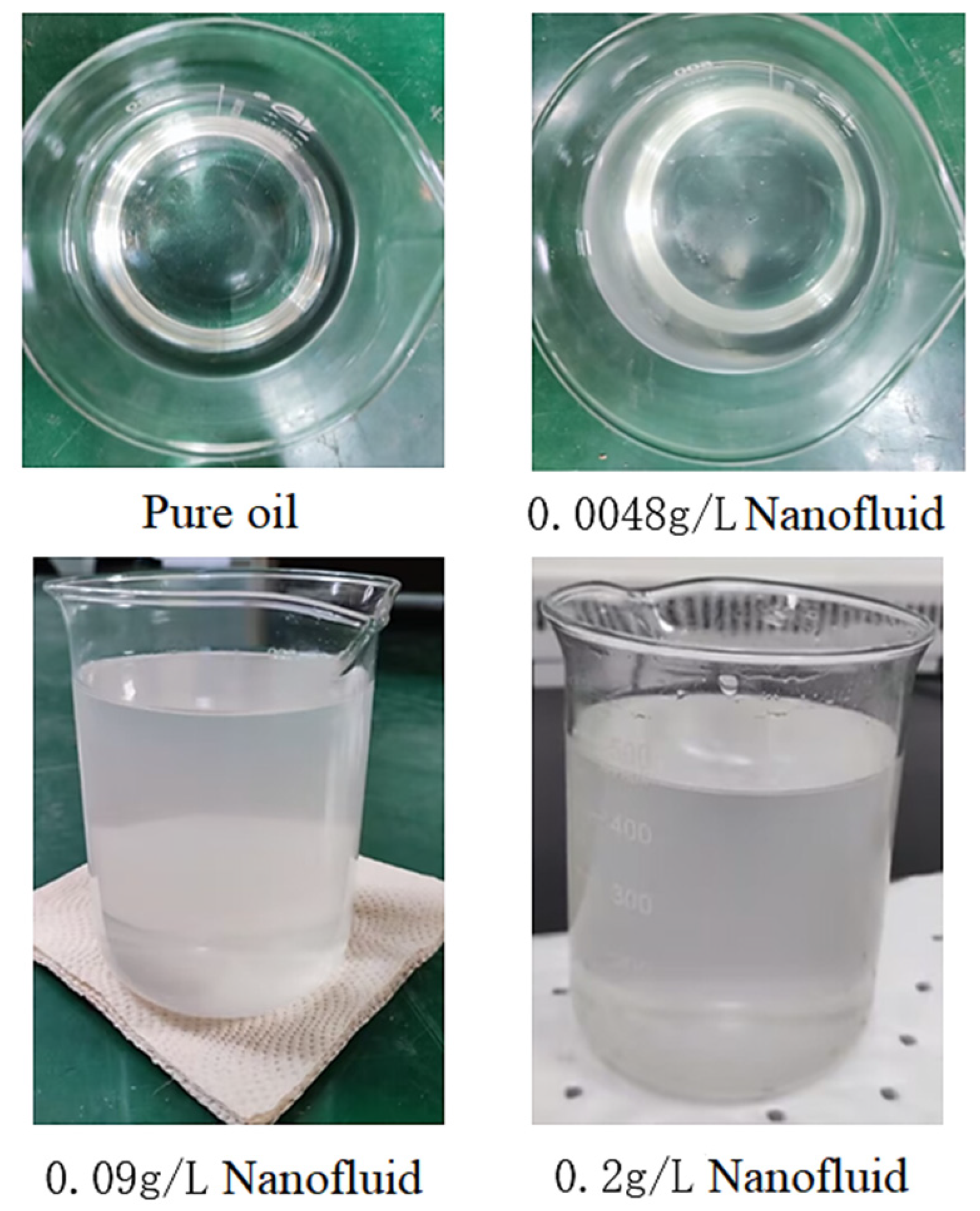
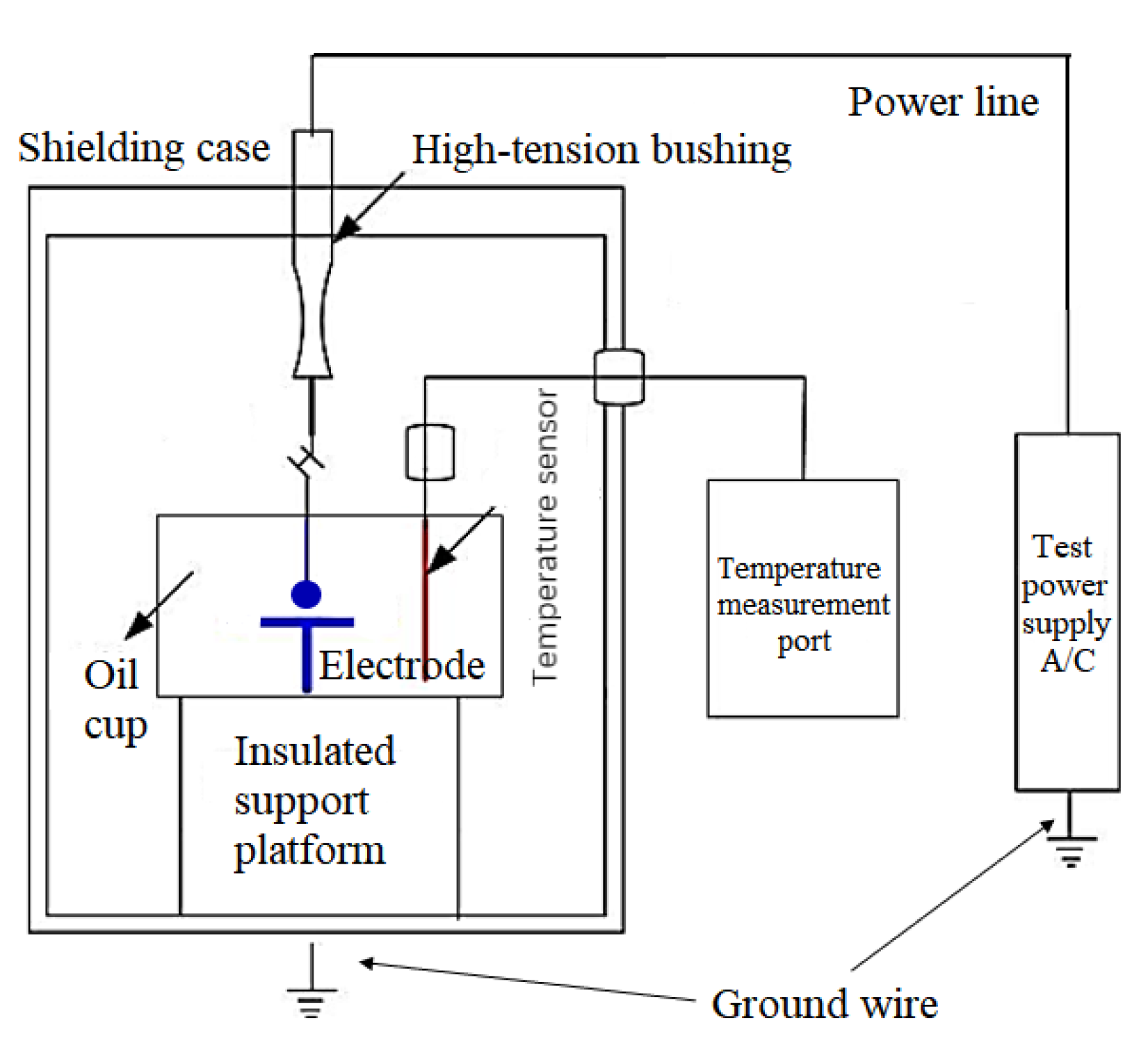

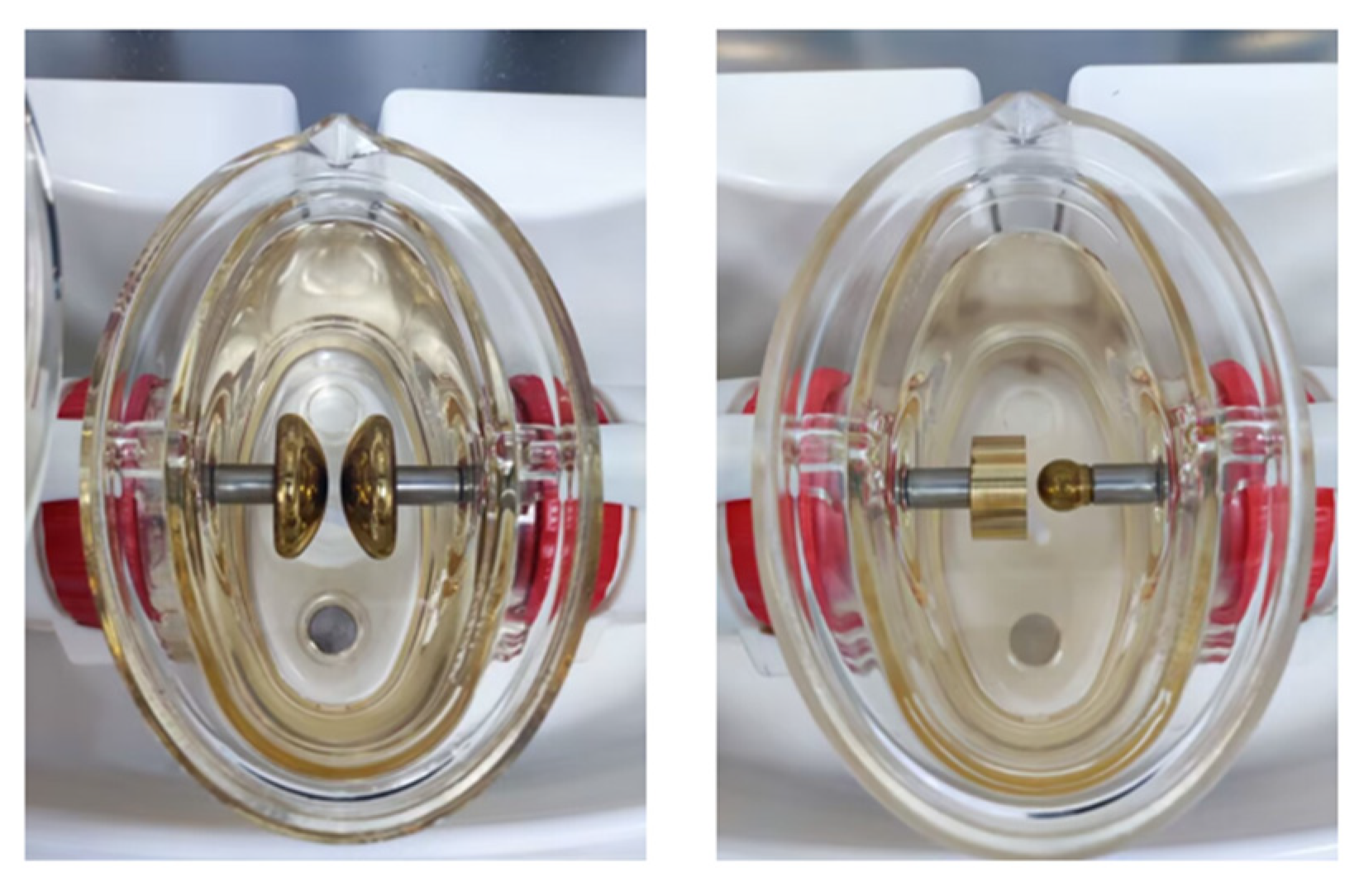
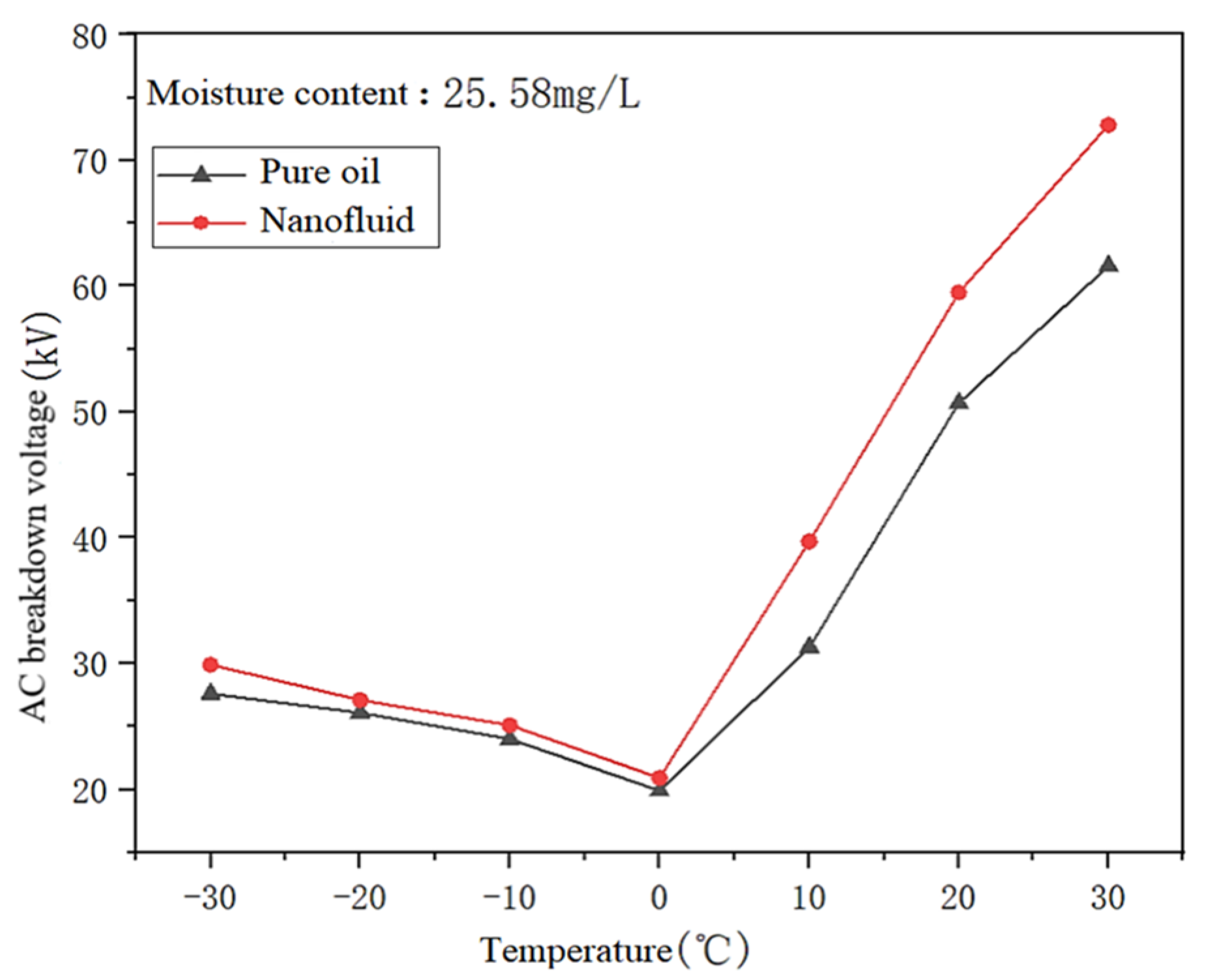
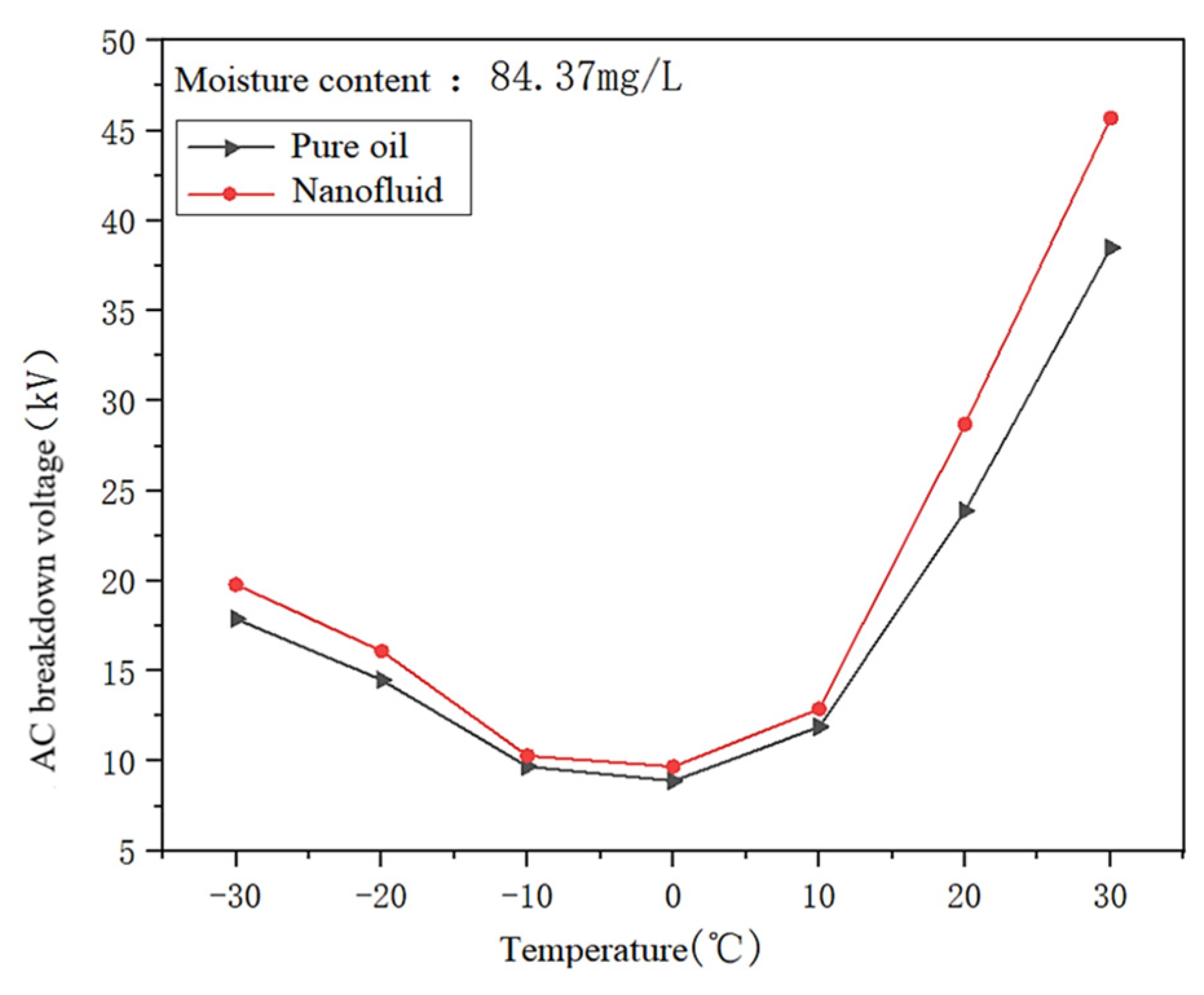
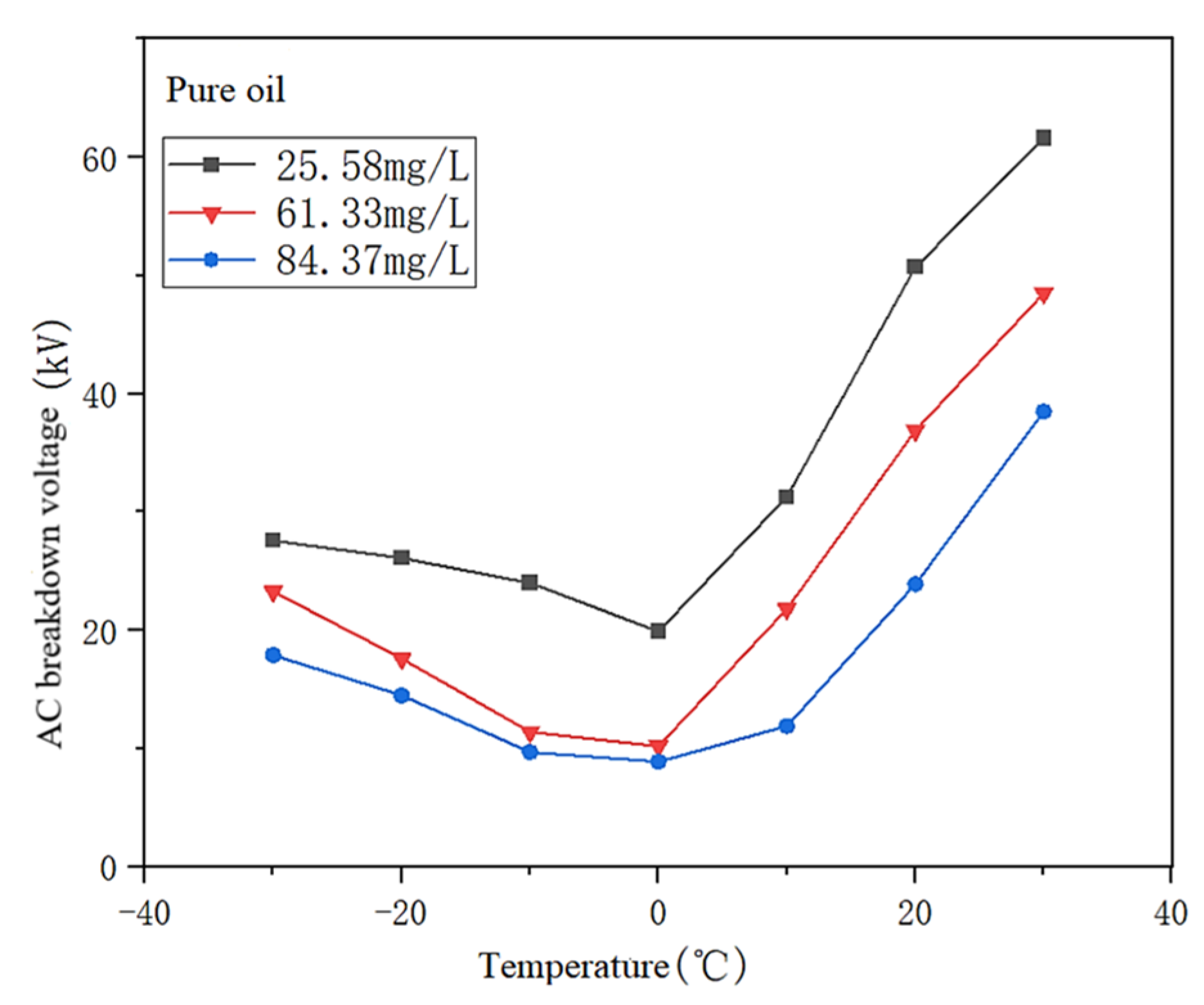

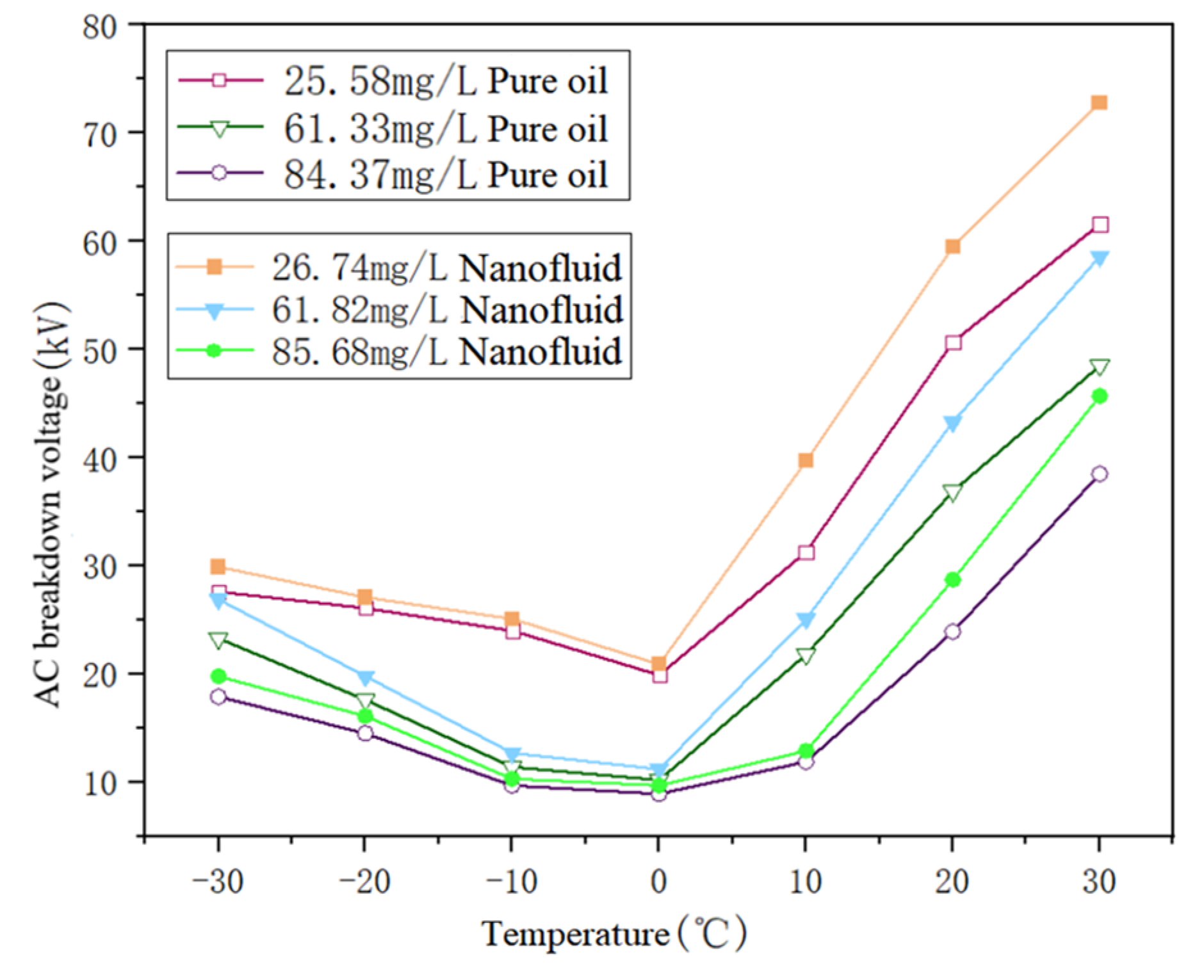
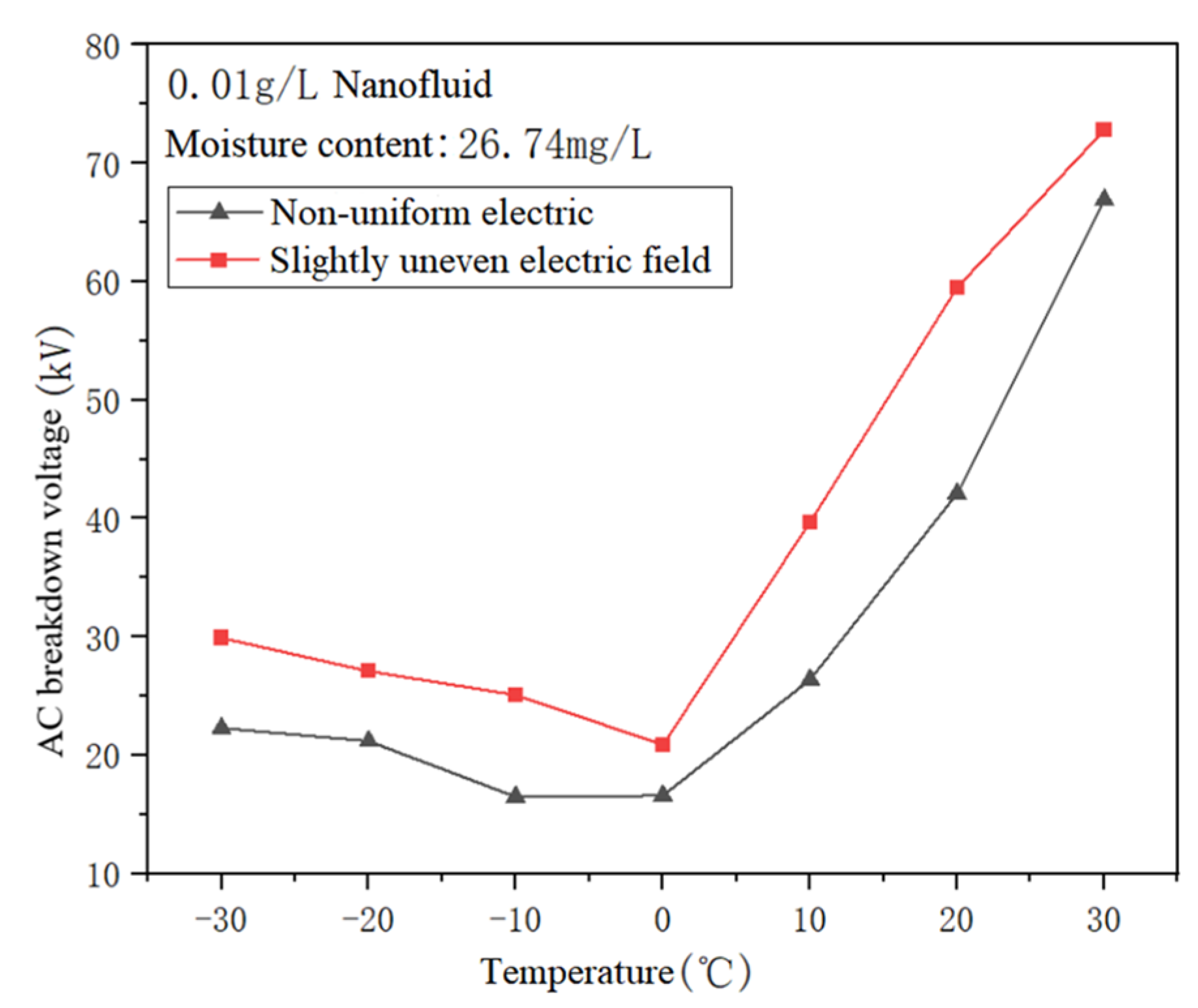



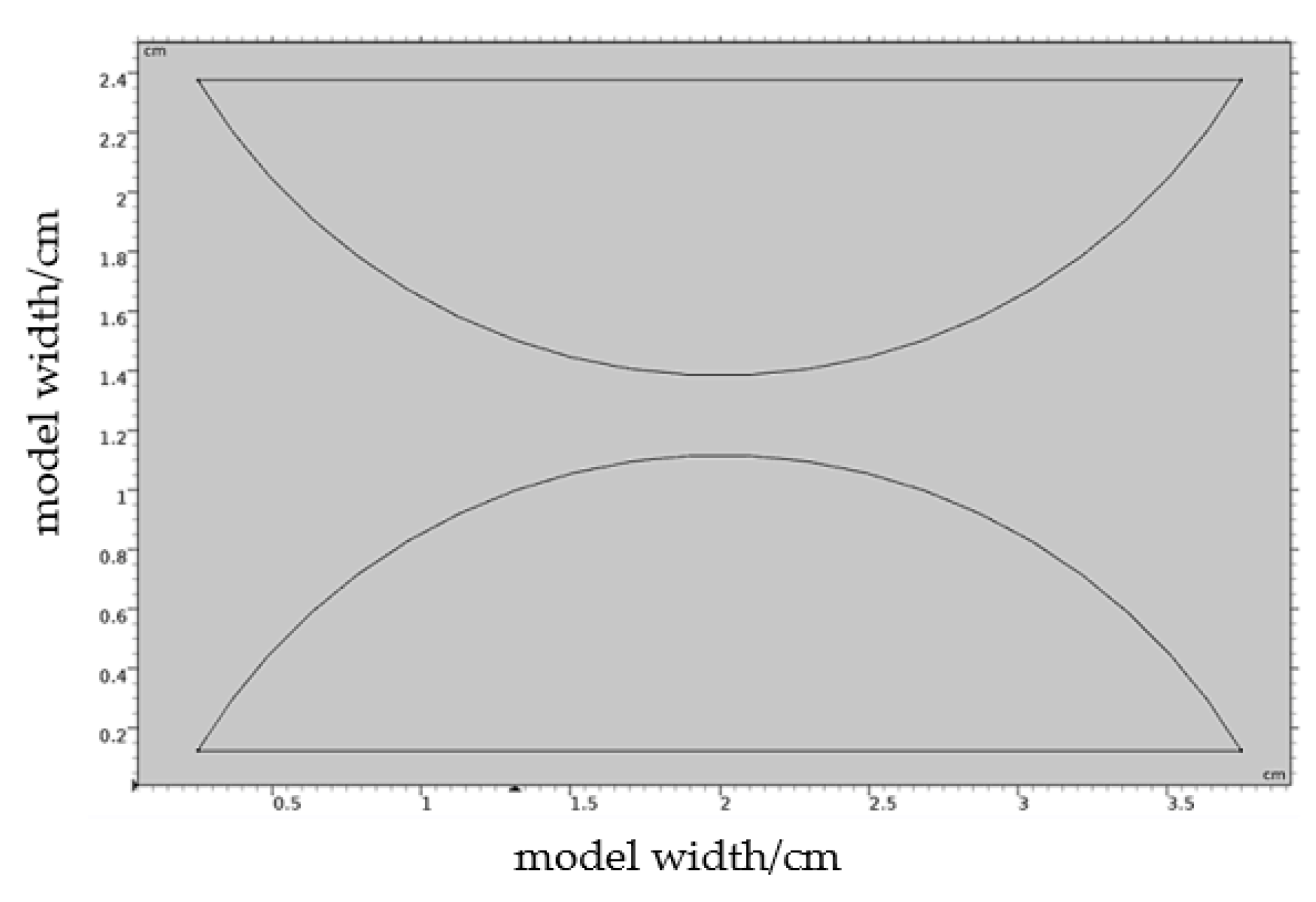
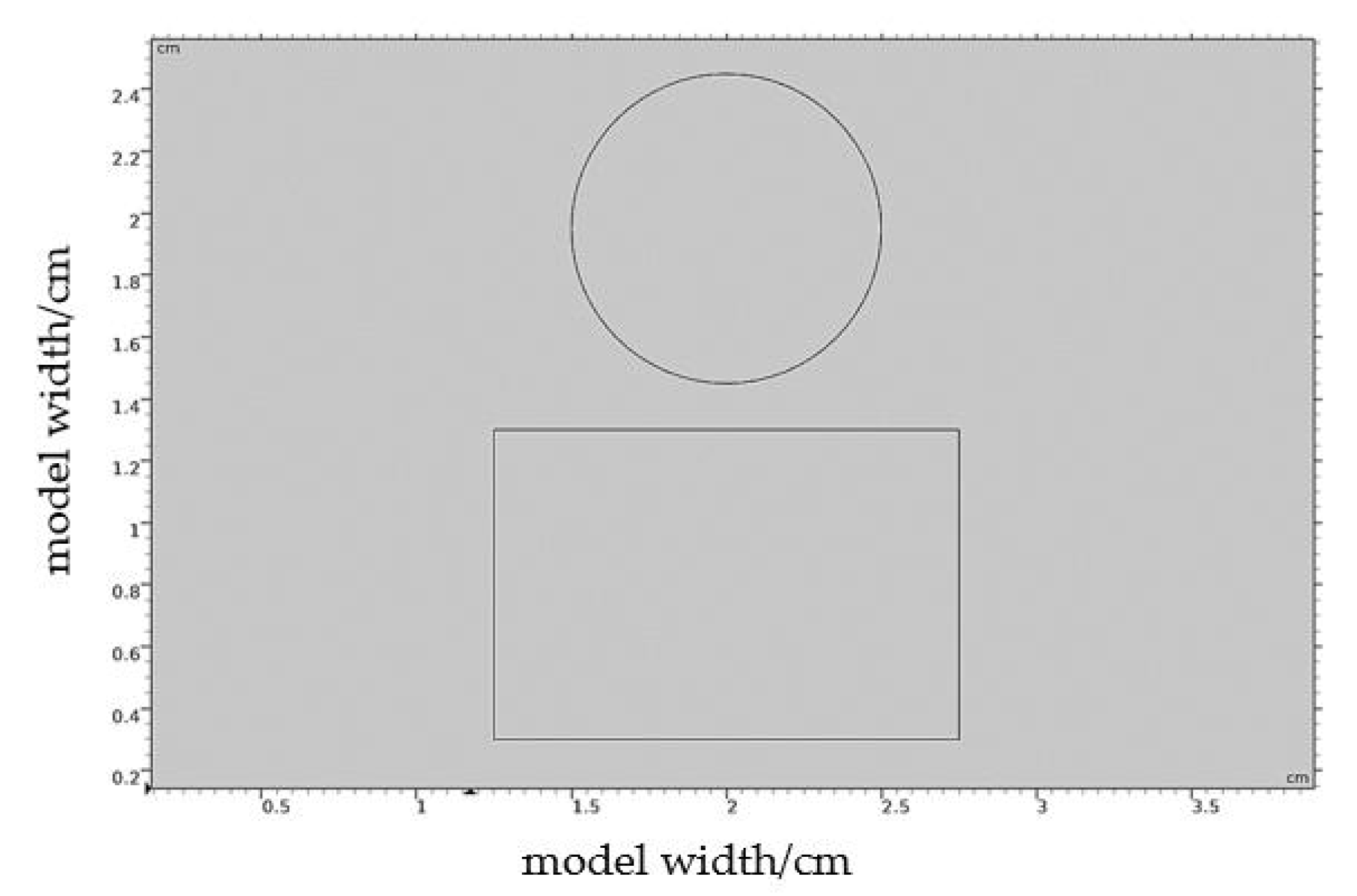



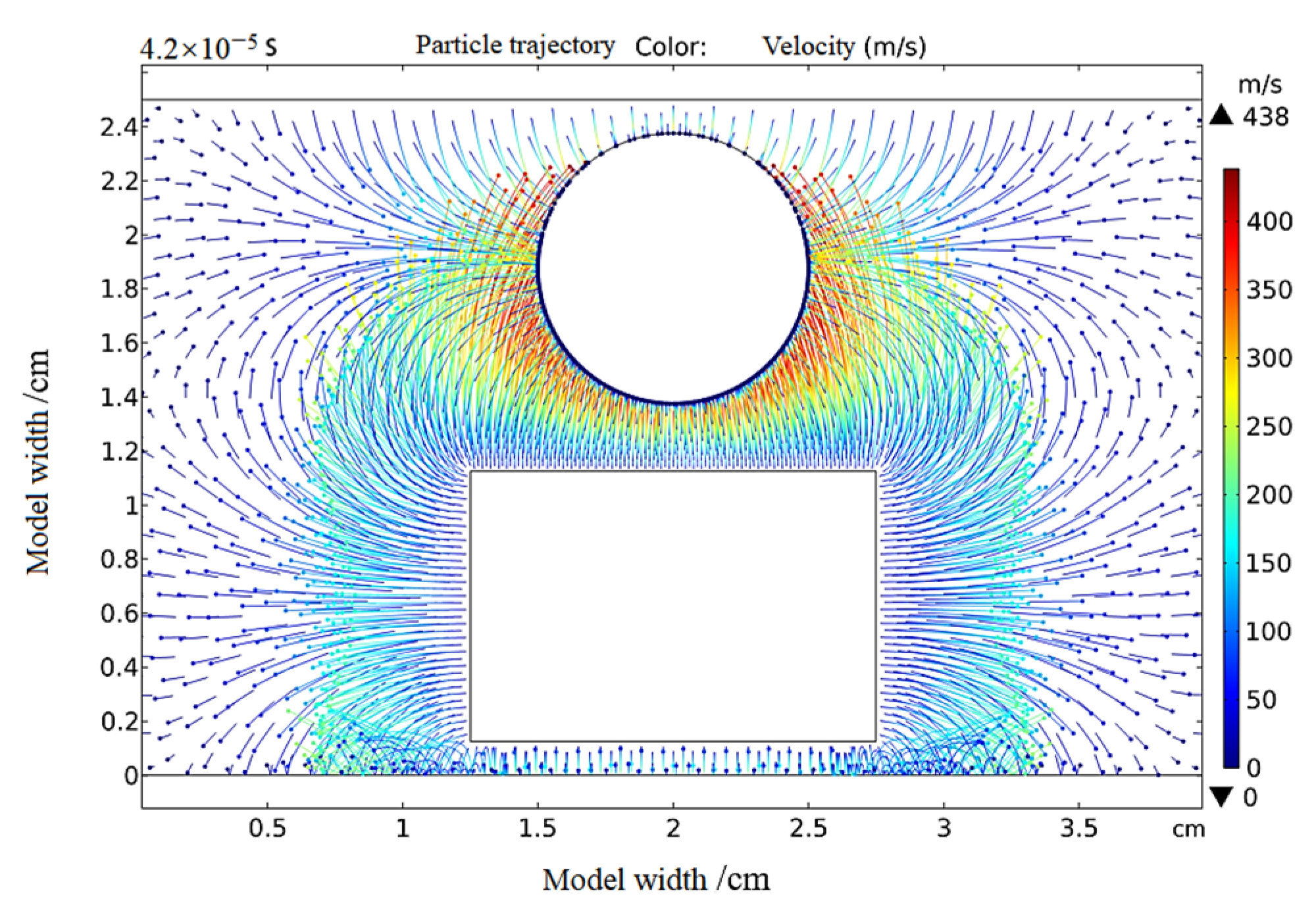

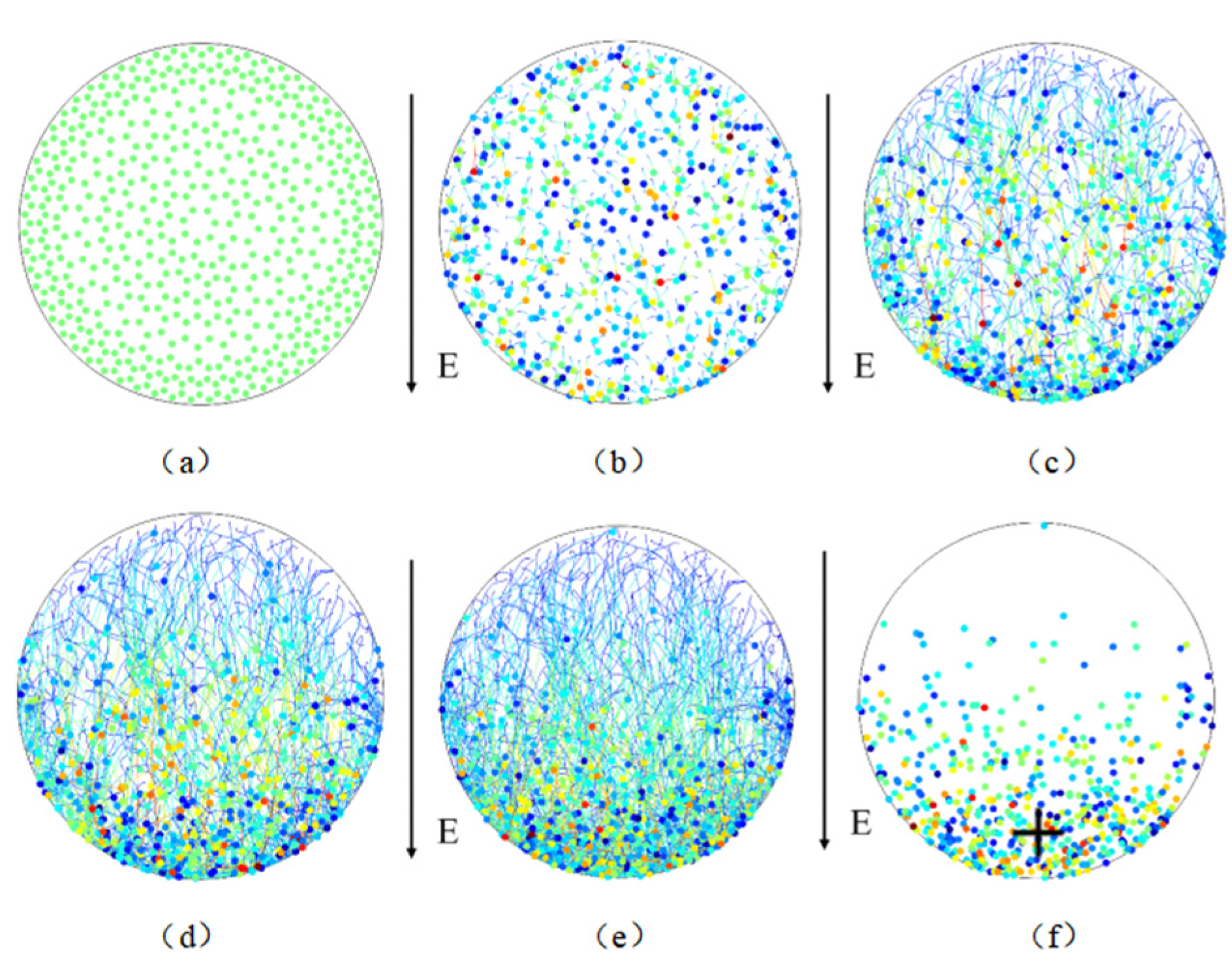
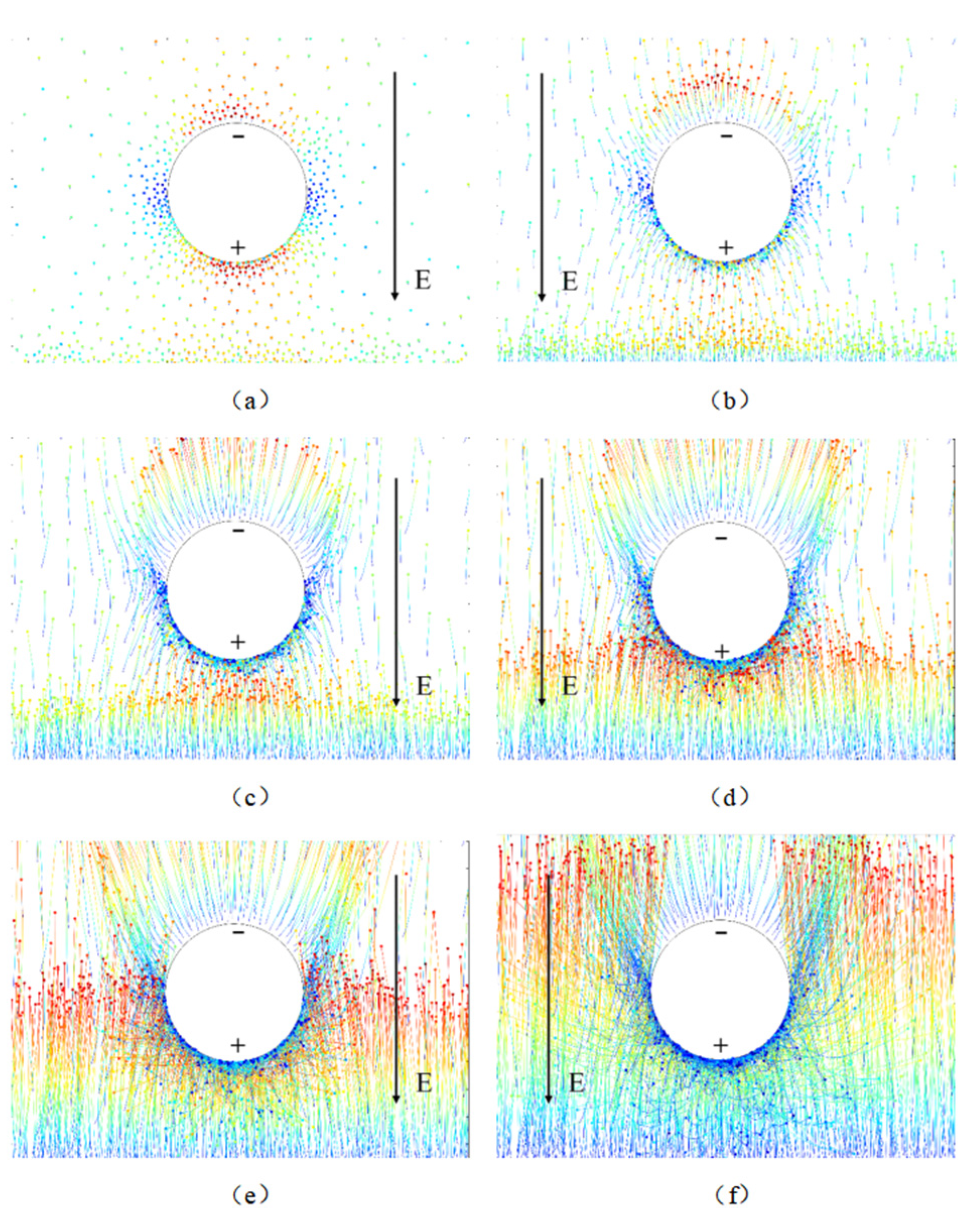
Disclaimer/Publisher’s Note: The statements, opinions and data contained in all publications are solely those of the individual author(s) and contributor(s) and not of MDPI and/or the editor(s). MDPI and/or the editor(s) disclaim responsibility for any injury to people or property resulting from any ideas, methods, instructions or products referred to in the content. |
© 2023 by the authors. Licensee MDPI, Basel, Switzerland. This article is an open access article distributed under the terms and conditions of the Creative Commons Attribution (CC BY) license (https://creativecommons.org/licenses/by/4.0/).
Share and Cite
Qin, C.; Huang, Y.; Liu, L.; Liang, H.; Shang, J.; Xue, Y. Study on Power Frequency Breakdown Characteristics of Nano-TiO2 Modified Transformer Oil under Severe Cold Conditions. Appl. Sci. 2023, 13, 9656. https://doi.org/10.3390/app13179656
Qin C, Huang Y, Liu L, Liang H, Shang J, Xue Y. Study on Power Frequency Breakdown Characteristics of Nano-TiO2 Modified Transformer Oil under Severe Cold Conditions. Applied Sciences. 2023; 13(17):9656. https://doi.org/10.3390/app13179656
Chicago/Turabian StyleQin, Chunxu, Yongxiang Huang, Liqiang Liu, Huijuan Liang, Jiafeng Shang, and Yunpeng Xue. 2023. "Study on Power Frequency Breakdown Characteristics of Nano-TiO2 Modified Transformer Oil under Severe Cold Conditions" Applied Sciences 13, no. 17: 9656. https://doi.org/10.3390/app13179656
APA StyleQin, C., Huang, Y., Liu, L., Liang, H., Shang, J., & Xue, Y. (2023). Study on Power Frequency Breakdown Characteristics of Nano-TiO2 Modified Transformer Oil under Severe Cold Conditions. Applied Sciences, 13(17), 9656. https://doi.org/10.3390/app13179656





